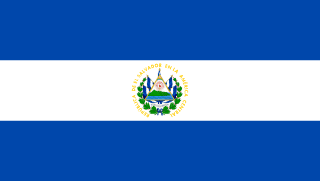El Salvador - Environment

As far as the environment of El Salvador is concerned, there have been . As for nvironment - international agreements, we have; .
About the environment of El Salvador
| Climate | We have tropical; rainy season (May to October); dry season (November to April); tropical on coast; temperate in uplands |
|---|---|
| Revenue from forest resources | |
| Revenue from coal | |
| Waste and recycling | Municipal solid waste generated annually: 1.649 million tons (2024 est.) |
| Total renewable water resources | 26.27 billion cubic meters (2022 est.) |
| Major rivers (by length in km) | |
| Total water withdrawal | |
| Municipal | 433.229 million cubic meters (2022) |
| Industrial | 94.316 million cubic meters (2022) |
| Agricultural | 1.411 billion cubic meters (2022) |
| Land Use | |
| Agricultural land | 57.7% (2022 est.) |
| Agricultural land: arable land | arable land: 34.8% (2022 est.) |
| Agricultural land: permanent crops | permanent crops: 7.7% (2022 est.) |
| Agricultural land: permanent pasture | permanent pasture: 15.2% (2022 est.) |
| Forest | 27.7% (2022 est.) |
| Other | 14.5% (2022 est.) |
| Urbanization | |
| Urban population | 75.4% of total population (2023) |
| Rate of urbanization | 1.33% annual rate of change (2020-25 est.) |
| Major urban areas (Pop) | 1.116 million SAN SALVADOR (capital) (2023). |
All Important Facts about El Salvador
Want to know more about El Salvador? Check all different factbooks for El Salvador below.
-
 El Salvador Factbook
El Salvador Factbook
-
 The Economy of El Salvador
The Economy of El Salvador
-
 Learn about the Government of El Salvador
Learn about the Government of El Salvador
-
 Communication in El Salvador
Communication in El Salvador
-
 Popular Universities in El Salvador
Popular Universities in El Salvador
-
 Enerny in El Salvador
Enerny in El Salvador
-
 Transport in El Salvador
Transport in El Salvador
-
 The Geography and society of El Salvador
The Geography and society of El Salvador
-
 The Environment of El Salvador
The Environment of El Salvador
-
 Military and security in El Salvador
Military and security in El Salvador